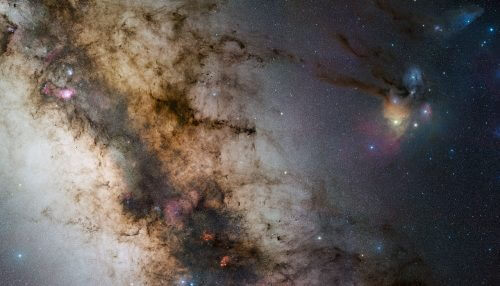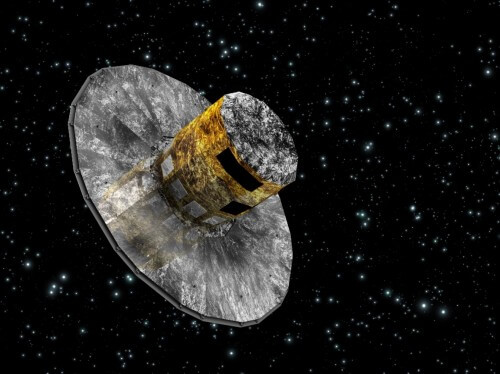A new map of the Milky Way will improve our understanding of the physics of stars - and ultimately the entire history of the galaxy

Astronomers will soon reveal a new map of cosmic reality. At the end of 2013, the European Space Agency (esa) launched the spacecraft Gaia for a five-year mission of mapping the sky at an unprecedented level of detail. By the end of its operation, the spacecraft is expected to accurately determine the location of about a billion stars in the Milky Way and in nearby galaxies, and the first set of location data generated by its operation has already been published. Gaia scans the sky with such a high resolution that it allows objects as small as five microns to be detected.Arc seconds: about the size of a small coin on the moon as seen from Earth. A camera with a resolution of a billion pixels will also determine the distance of a star and its speed in two dimensions, information that will allow a new understanding of our environment in the galaxy.
To me Catherine Johnston, an astronomer from Columbia University, the creation of this star map is similar to the creation of the first map of the Earth's continents, a map that transformed a vague image of a blue and green body into a world with mountains, rivers and valleys. "It's strange, but we hardly know what exactly our galaxy looks like, compared to other galaxies whose shape we have more precise knowledge about," says Johnston. She explains that it seems almost impossible to photograph an entire galaxy when we are inside it, but that is exactly what the Gaia spacecraft will do.
Many are impatiently waiting for the updated map. according to Timo Frosti, the chief scientist of the Gaia Project, on the day the first data was published, in September 2016, at least 10,000 people accessed the online archive. The data includes an initial position of one billion stars (more precise data should be published in the future) and the distances and lateral movements of the two million brightest stars in the sky. In each data set that will be published in the future, the distances and movements of more and more distant stars in the galaxy will be revealed, and thus an ever-spreading map will be created, like ripples in water, with our sun in the center.
The findings obtained have already led to a flurry of discoveries. For example, Gaia scientists used the initial results to resolve a dispute about the distance of thePleiades, the famous star cluster also known as the "Seven Sisters" (in Hebrew, Kimah). This controversy arose following the latest data set produced by the mapping project hipparkos which preceded Gaia. This dispute was no small matter at all: without the correct distance, astronomers could not determine with any degree of certainty the brightness of the stars and their radii. It turned out that Hipparchus' measurement was wrong, and the exact measurement was also important because the Pleiades are a test case for understanding the processes of star formation. "The theory about young stars is quite problematic," says Frosti. "They are not stable, so there are many alternatives. In order to focus these models, the precise observations are therefore very important to us."

Other research groups are using the new data to study unusual stars (those whose light appears too faint or too bright, or which move too fast or too slowly). "Astronomers think we understand quite well how stars work," he says David Spergel, an astronomer at Princeton University. "But I suspect that when the data in our hands improves, we will discover that our basic picture is indeed correct, but that there are things that we thought we understood but that we actually do not understand." The mapping of the stars is also related to the physics of planets, so the project also involves astronomers looking for interesting planets orbiting stars in the Milky Way. Although Gaia has not yet discovered such worlds, scientists hope that in the future it will locate thousands of planets, or even tens of thousands.
Despite the treasure reaching their hands in September 2016, astronomers are still eagerly awaiting the next observations of Gaia. The project is expected to publish new data four more times. "It is possible to do a lot of scientific work with the first published data set, but it is not similar to what we will be able to do at the end of the mission," says David Hogg, an astronomer from New York University. The complete data set, which will be completed in 2022, will allow scientists to tackle the main scientific goal of the project: discovering the structure of the Milky Way and the dynamics taking place in it to shed light on the violent history of the galaxy. For example, some of the stars in the Milky Way were born in smaller galaxies that were later swallowed up by our giant galaxy. The remnants of these small galaxies can now be seen as faint streams of stars stretching across the sky, providing clues about the timeline of the evolution of our galactic environment. "We find galaxies that existed in the past, we find the orbits in which they moved, and we find the stars that were part of them. This is how we can construct the story of the engulfment of other galaxies by our galaxy," says Catherine Johnston.
The truth is that it is impossible to know in advance what we will end up getting when this project comes to an end. In addition to Gaia's primary mission, it will also observe thousands of non-stellar objects in the solar system. It may map the distribution of dark matter in the Milky Way, and it may determine the location of hundreds of thousands Quasars: the bright nuclei of ancient galaxies. In the long run, Gaia will also improve the observations of other telescopes because with its help these instruments will know exactly where to look, says Frosti. Meanwhile, David Hogg is organizing "Gaia Races" in New York and Heidelberg, gatherings to which astronomers from all fields are invited to explore the data in a collaborative environment. "I think the right way to think about it, and the real reason everyone is so excited, is that it's an opportunity to make discoveries," Hogg says. "People are excited because this is a new world. And the first published dataset is just a first glimpse into this new world.
The numerical data of the Gaia mission
- 1.5 a million kilometers The distance of the spacecraft from the Earth
- פי 50 - The resolution of Gaia's camera compared to that of the Hubble Space Telescope
- פי 30 - The amount of light the main mirrors can collect compared to the Hipparchus star mapping satellite
- 70 - The number of times Gaia will watch each of its billion targets
